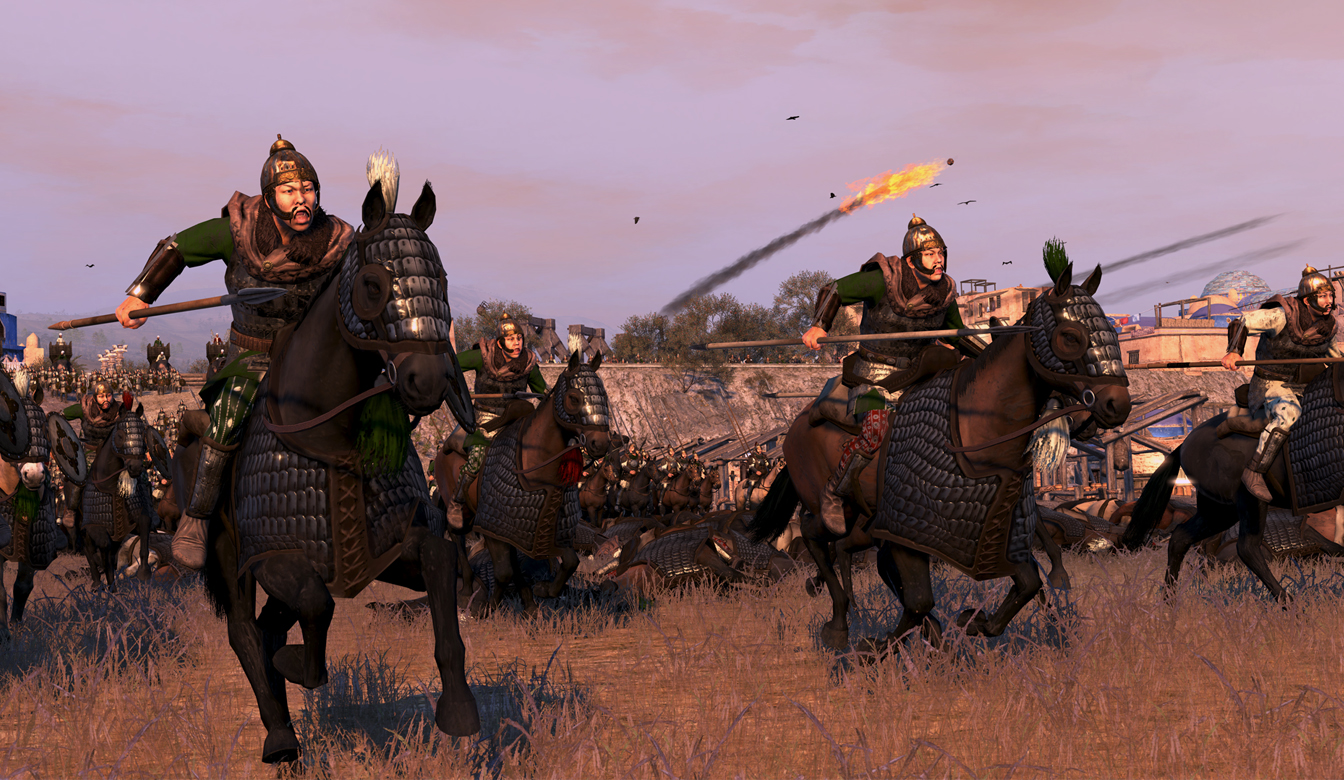
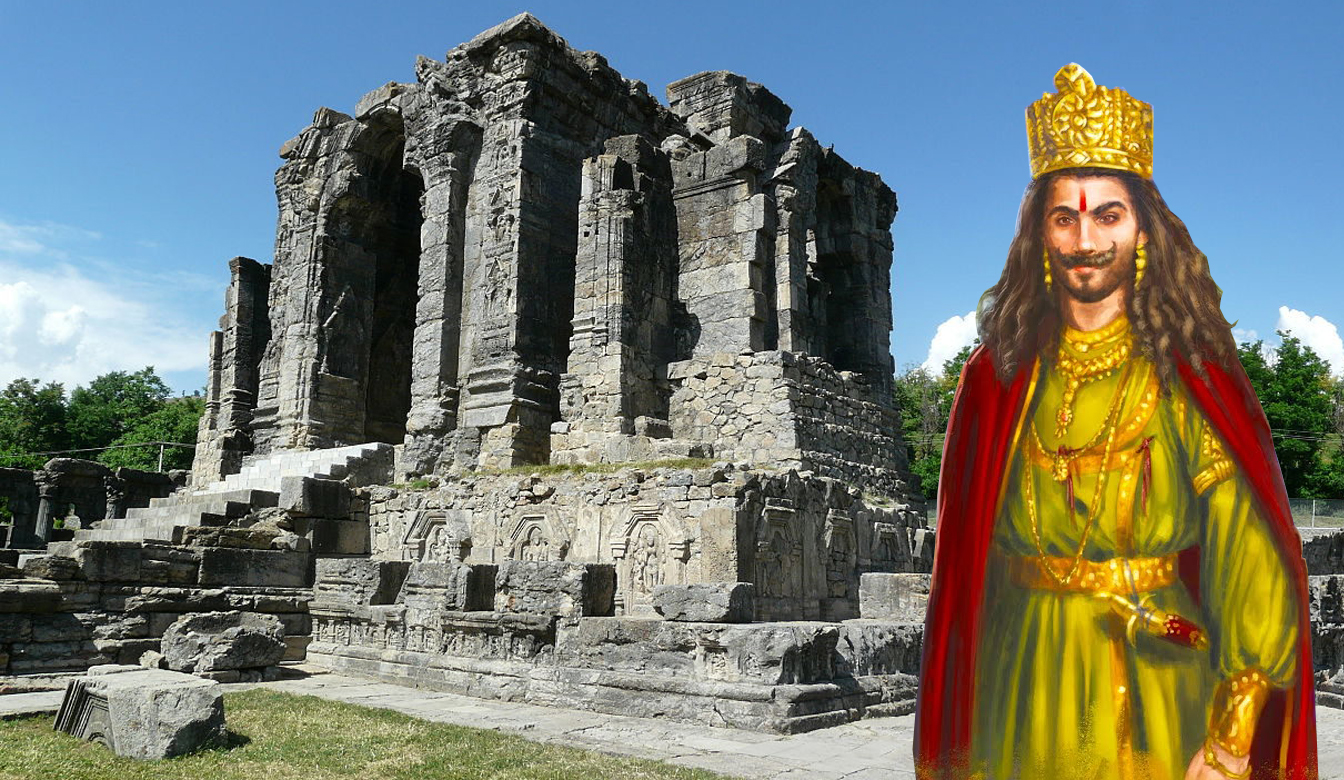 (625 C.E)
(625 C.E)
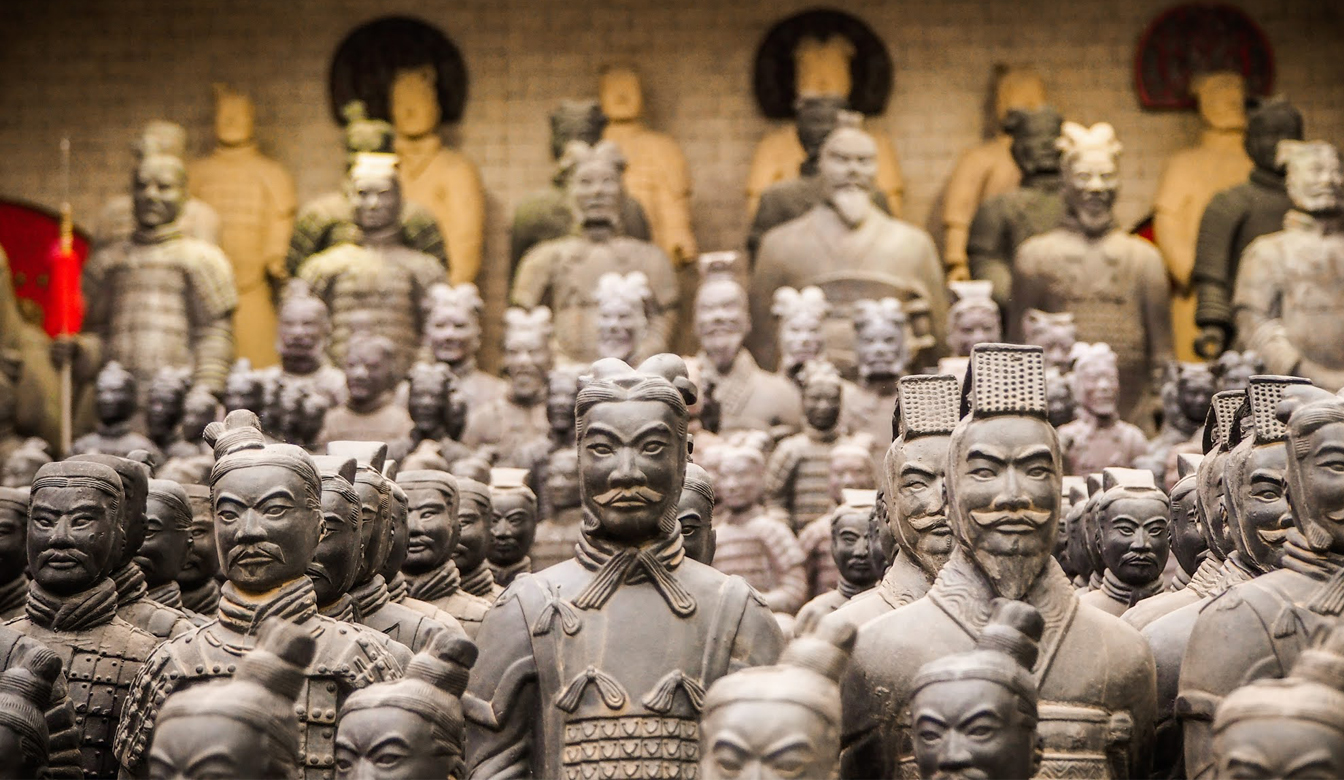
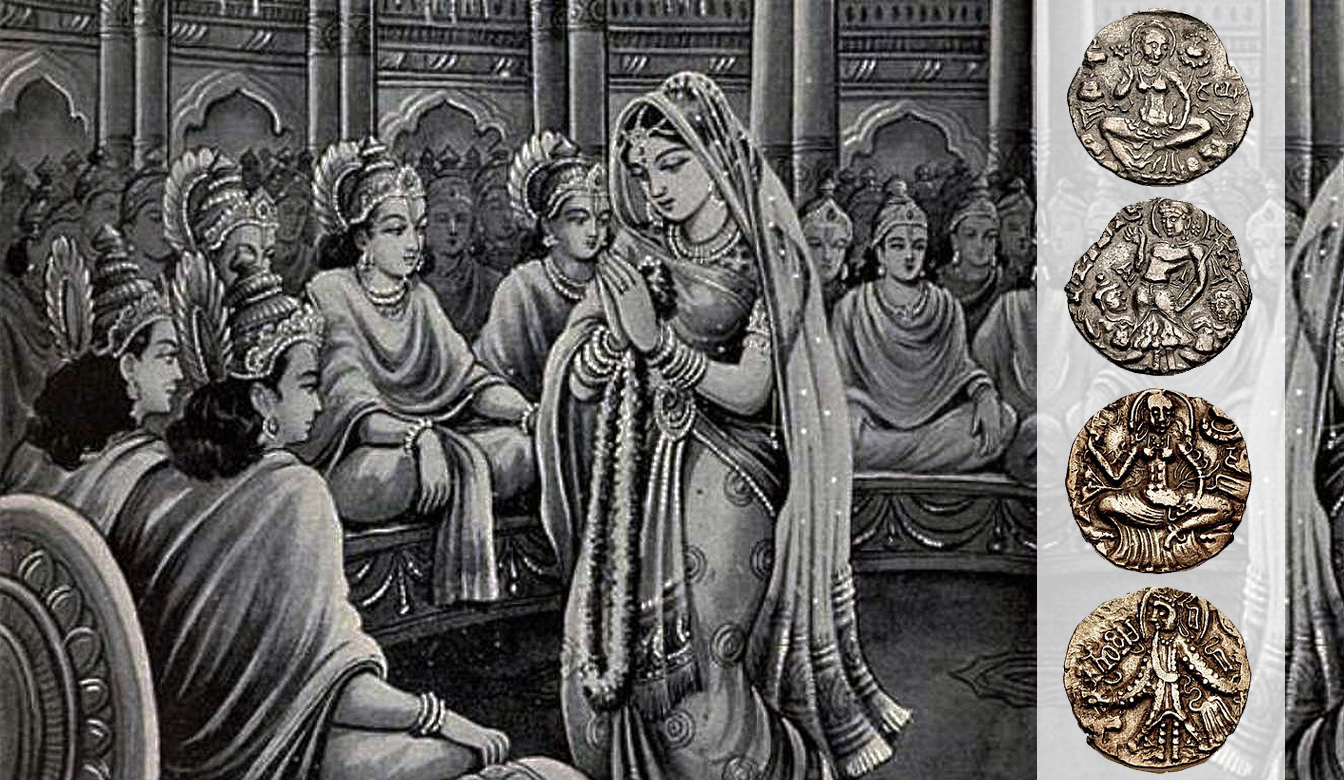 (1700-1282 BCE)
(1700-1282 BCE)

 (320 B.C.E)
(320 B.C.E)
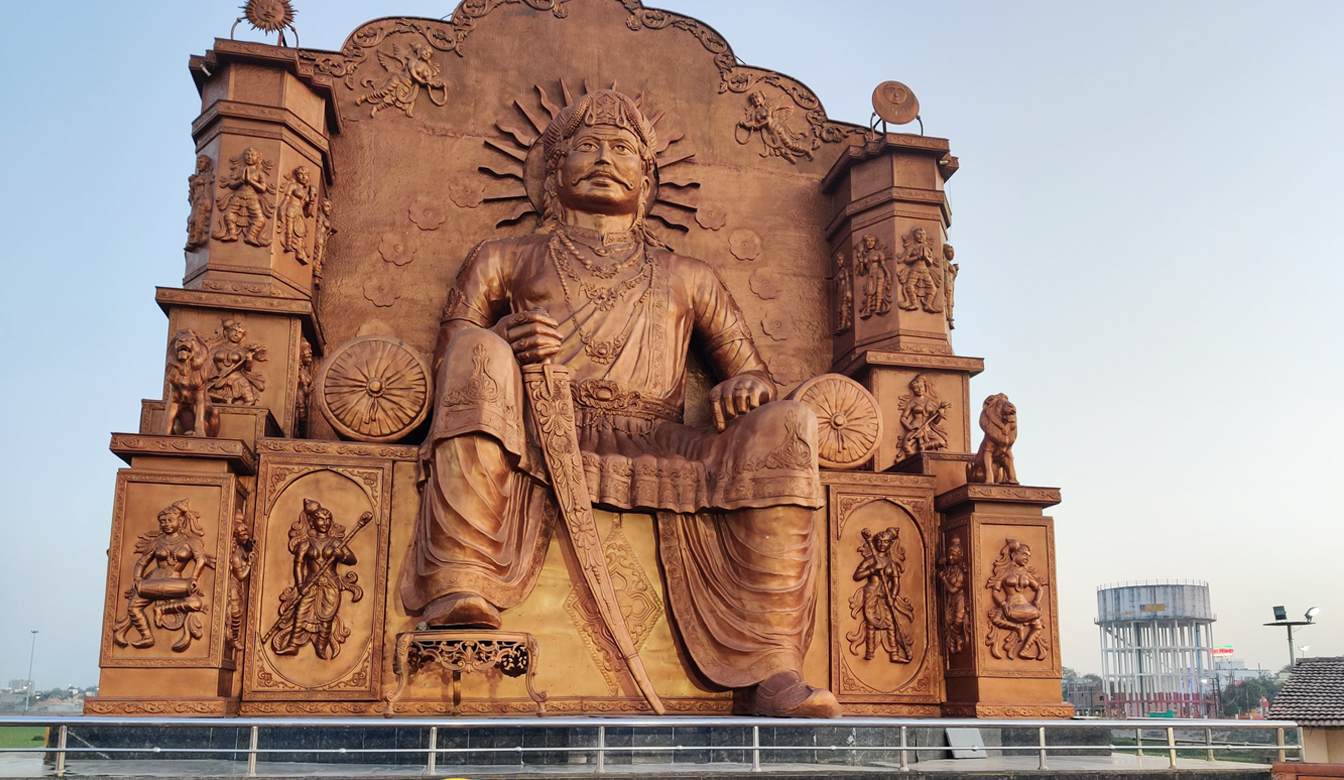
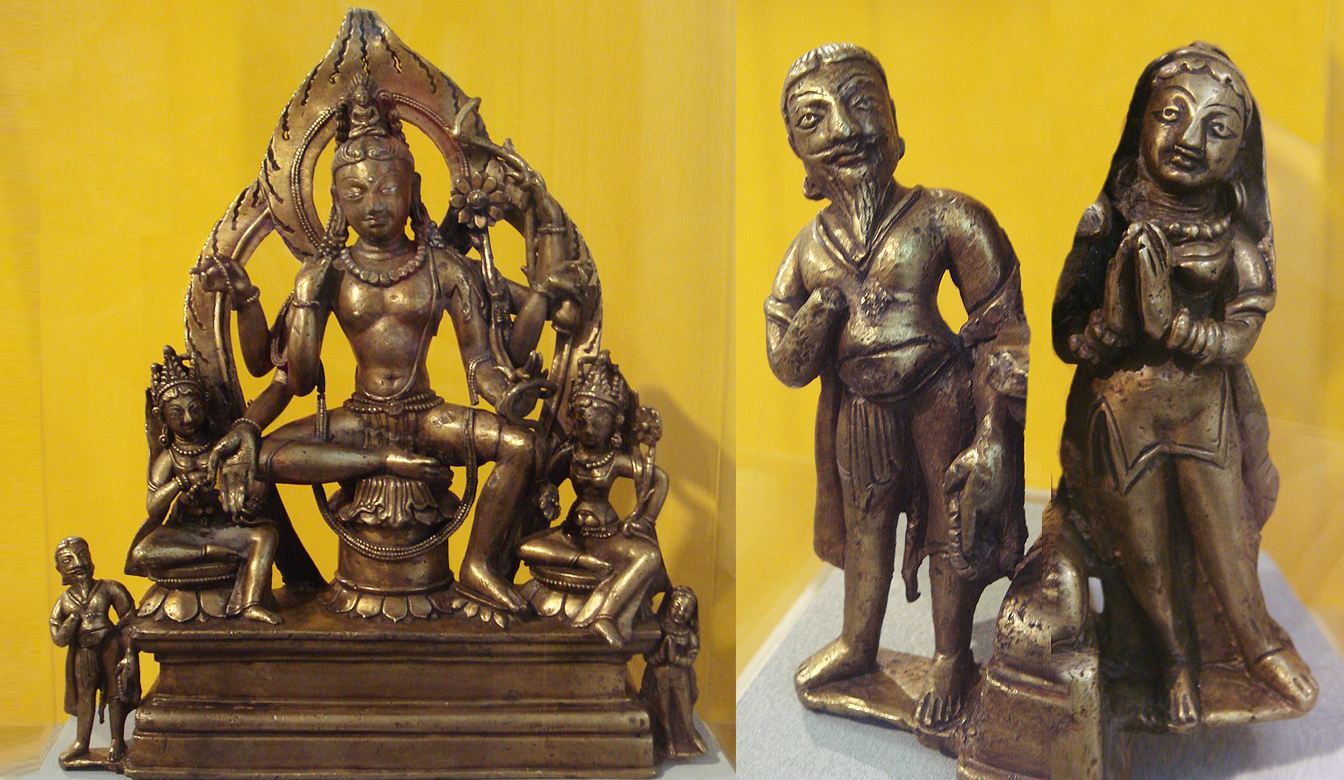 (960 C.E)
(960 C.E)
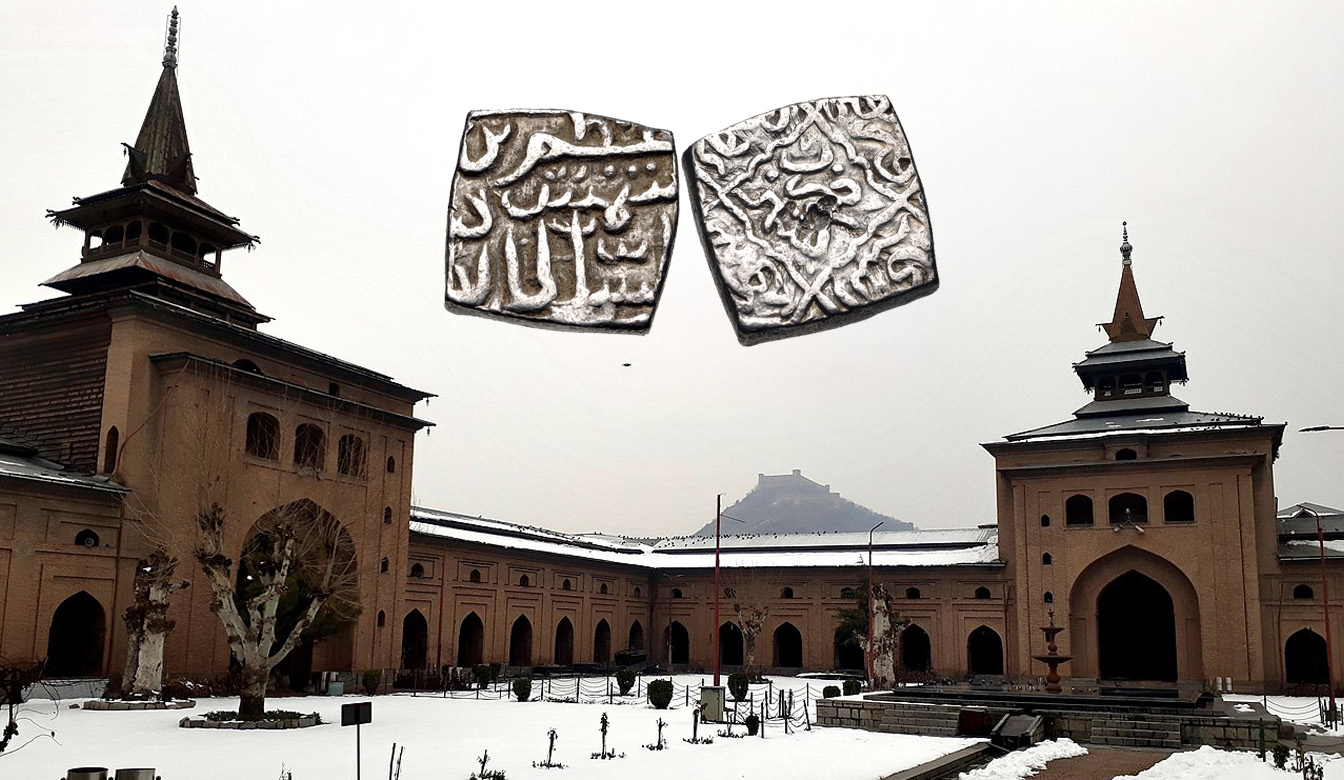
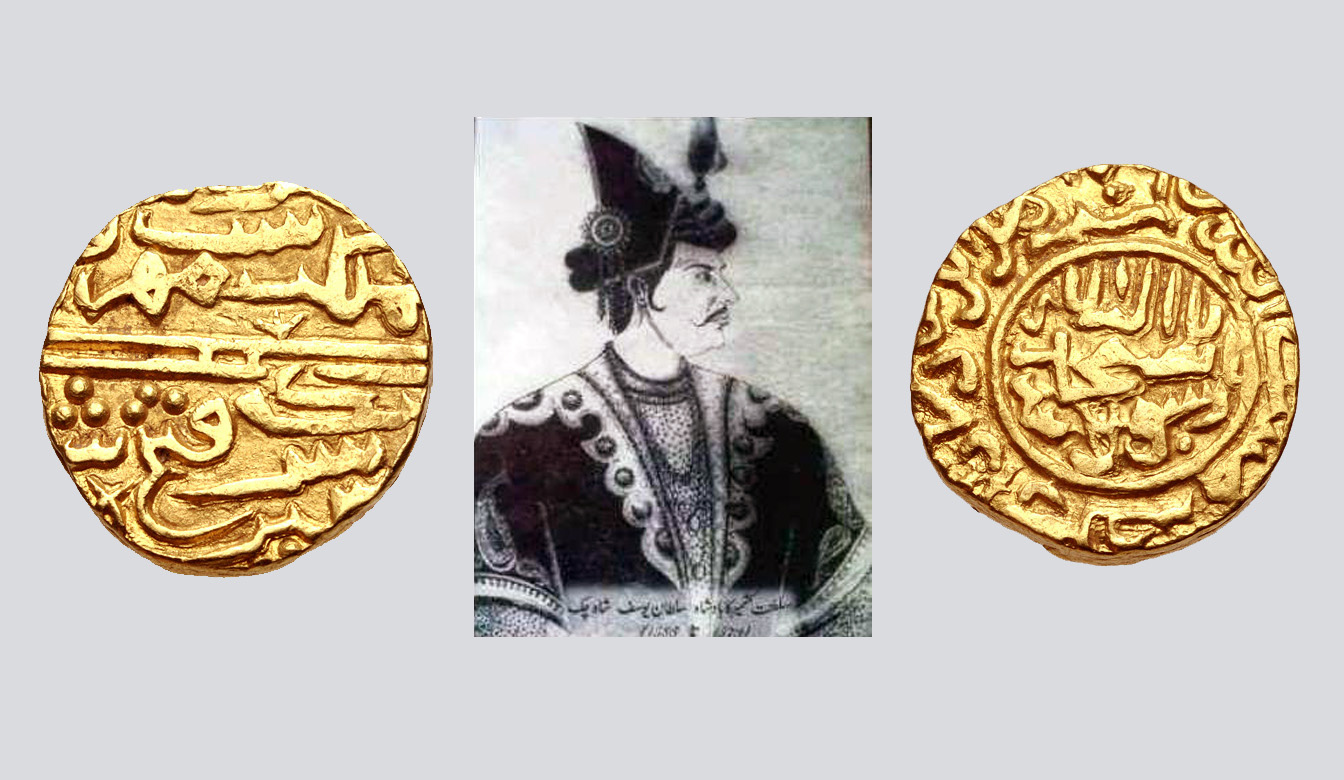 (1555)
(1555)

 (1533)
(1533)
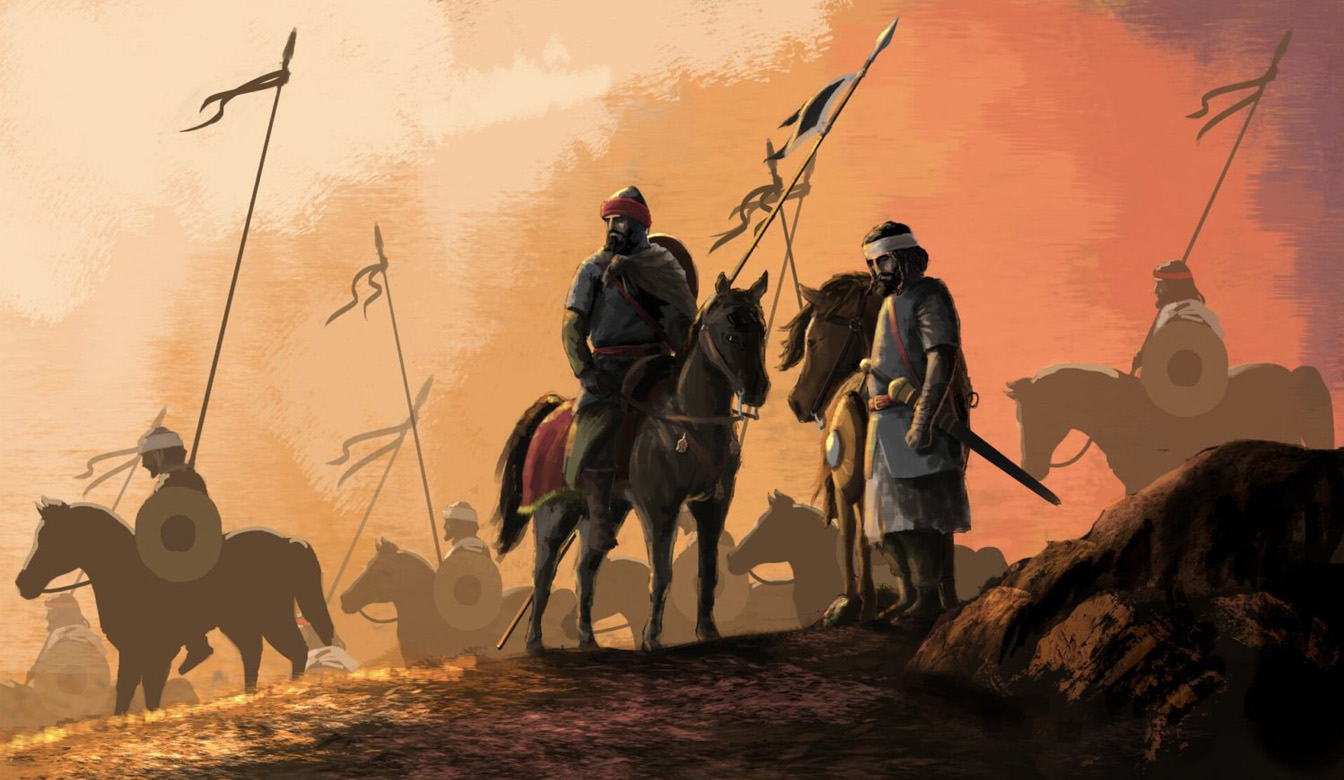
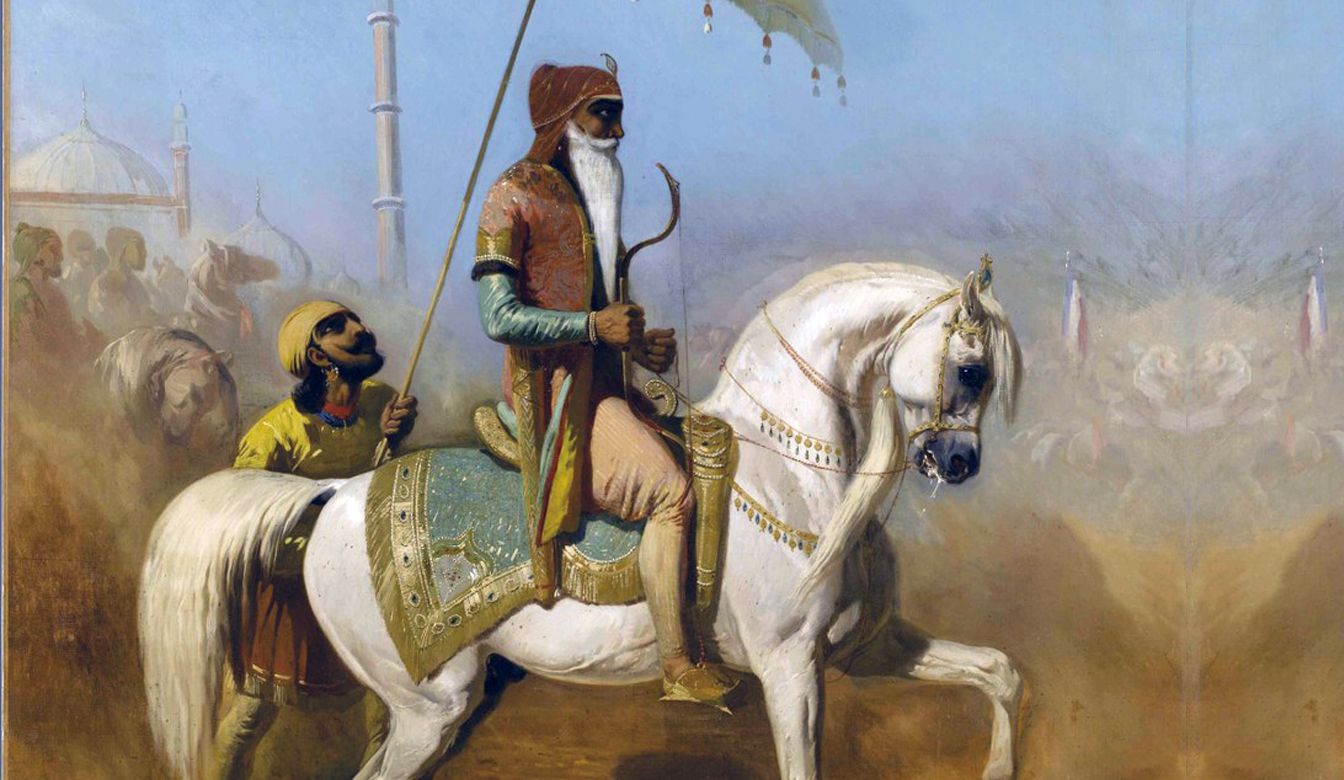 (1820)
(1820)


The White Huns Dynasty
(600 C.E)
When Yueh-chi pressed the Shakas, the Huns were behind them. The west ward movement of the horde was continuous in that era. The Huns had reached Europe and were earning three the reputation for wanton brutality which still adheres to the name. At the same period, a tribe, or group of tribes known as the White Huns were settled at the Oxus. They moved south by the regular route through Afghanistan, and just after the 5th century they were defeated by the emperor skandagupta. The white Huns did not become the permanent masters of gangatic plain but soon after the 465 CE, they were overrunning the north west under a leader Toramana, who before the end of the century was rising in the Punjab. His son mahiragula or mahiragula or Mahirakula also recorded as Mehrkul the White Huns,entered Kashmir in 6th century C.E, after fleeing his father’s empire and was provided with shelter by the then Kashmiri ruler. His father, Toramana had ruled over Afghanistan and Western India. Mihirakula usurped his host and overtook the throne in 528 C.E. He was hostile to Buddhism and attacked Gandhara but eventually committed suicide. Their rule lasted up to 627 CE. Mehrkul became a worshipper of Shiva. A Shiva temple bulit by him Mehrashwar stands in Pahalgam. Years after his death, Vikramaditya sent his minister Pratapaditya to head the state of Kashmir.

Karkota Dynasty
(625 C.E)
The new dynasty known as karkota was founded by Durlabhavardhana,who had married the daughter of the last Gonanda king, Baladitya (Kumar 2008:26).It started around 627 C.E which lasted up to 948 C.A. Lalotaditya-Muktapida was the most famous ruler of Karkota dynasty as well as among all the rulers of kashmir. There are given two dates regarding his Regina i.e. 725-753 or 724-761 CE. He subjugated almost the whole of India under his domain, stretching from Baltistan, Dardistan and parts of Tibet to the Punjab, Kangra, Poonch and Kanyakubja. He also conquered almost all of Afghanistan, Peshawar, Jammu, Kanauj and Kalinga (Orrisa). He reconstructed the famous sun temple of Martand. His capital was in a place called Parihaspora, about 30 miles north of Srinagar. Jayapida, the grandson and successor of Lalitaditya, expanded his kingdom through conquests outside Kashmir. He ruled from 751-783 CE. Avantivarman, another pertinent ruler, who ruled from 855-883 C.E., chose to improve his kingdom rather to invade foreign lands (Dewan 2004).). During his regin, architecture reached to a level not Shankarvarman who came to regin in 883CE, unleashed an era of economic oppression and the plunder of temples. He died in 902 CE during the last of his many fruitles invasions of neighboring states (Dewan 2004:62).

The Kushans
(178 C.E)
Shortly before 100 B.C.E., the Yueh-chi hord of nomads had driven the Shakas out of Bactria. According to an account, this hord comprised of five tribes, one of which, the Kushan eventually became supreme over the others, so that the name Yueh-chi got disappeared. The earliest rulers of this dynasty were powerful and successful conquerors. They quickly came south, extending towards the Punjab, Sindh, and Gujrat and also in the Gangetic and also in the Gangetic plains (Moreland 1957:76). Kalhana’s account of Turushka Kings, indicates without any doubt the Kushan occupation of the valley. The three kings mentioned by him are Huskha, Juskha, and Kanishka, each of them is credited with the foundation of a town, christened after their respective names: Hushkapura, Jushkapura and Kanishapura (Dhar 2007:3), now known as Kanispor near Baramulla (Dewan 2004:49). The Kushan Kings also built many temples and vihars. According to many scholars, Kanishka held the third great council of the Buddhist church at Kundalvan (Haewan), near Shalimargarden) (Dhar 2007:3). Kanishka, who ranks with Ashoka in fame, not only on India but throughout Central Asia as far as China, was considered as the third in line (Moreland 1957:76), annexed Kashmir around 78 C.E. The Kushans ruled in Kashmir till 178 C.E (Dewan 2004:29).

Gonanda Dynasty
(1700-1282 BCE)
According to Kalhana, there ruled in Kashmir in the earliest time, fifty-two rulers. The names of those rulers were not recorded by later chroniclers, but fortunately, four of them were mentioned in the Nilamatapurana. They were Gonanda I, his son, Damodara I, Damodara’s wife Yashovati and the letter’s son Ghnanda II(Ray:36). There had been two phases of Gonanda period. While the second phase started around 24.C.E.and lasted till the 5th century C.E. It is known from the Rajatringini that the ruled 20 years before the Mahabharta war. He was on the side of the kuravas, being a relative of the Jarasandha of Magadha. Among his dateless successors, Lava, Kusha and Ashoka (probably the great Ashoka) are known. It is believed that the Gonanda Dynasty ruled for 1014 years,9 months and 9 days (Dewans 2004:29).

Pandu Dynasty
(300 B.C.E)
The Pandu (Lochtefeld 2002:496) dynasty ruled from an unknown date to the 3rd century B.C.E. It was a south Indian dynasty with its capital at the city of Madurai in Tamil Nadu. The Pandu existed as the regional power as early as the late 6th century when they fought against the Pallavas of Kanchipuram to take control of peninsula. They at once, became vessels to the Chola Dynasty when the letter reigned over all south India. But, with the decline of Chola kingdom in 1279 (Lochtefeld 2002:496-7). Thereafter, one after another came the thirty-five kings of Pandu dynasty. Twenty-Three kings of Pandu dynasty also ruled over Kashmir. During the rule of Pandava king Bhimsen, the Kashmir border extended from Kanyakubja (Kanauj) to Gandhara.

Mauryan Dynasty
(320 B.C.E)
Around 320 B.C.E. Chandragupta Maurya established his rule at pataliputra. He was the first paramount, sovereign emperor in India to extend his kingdom from the bay of Bengal to the Arabian Sea (Smith 1987:107-109). His grandson Ashoka was the most pertinent figure of this dynasty who ruled from 270-230 BCE (stein 2010:68). His kingdom extended from Bengal in the east to the Hindukush in the west (Saklani 2013). He turned to Budhhist faith of Thrivada sect and 3rd Buddhist council in Pataliputra (Thapar 2002:181). The great Mauryan emperor Ashokla is recorded to have ruled Kashmir, and Kalhana rightly mention that the king was a follower of Buddhism. Ashoka founded the old city of Srinagar called now as Pandrethan (Puranadhisthan) and also build many vihars and temple and repaired the old shrines. At Vijeshwari (modern Bijbehra), he built a Shiva Temple, thus winning the old shrines. At Vijeshwari (modern Bijbehra), he built a shiva Temple, thus winning the heart of the local population, who were mostly worshippers of Lord Shiva (Dhar 2007: 2). Ashoka was succeeded by Jalauka, who reverted to the worship of shiva. The Mauryas were followed by Kushana Dynasty.

Vikramaditya Dynasty
(600C.E)
In the 6th century C.E., Kashmir came under the rule of Vikramaditya Harsha of Ujjain, marking Kashmir’s Golden age. From that time, Kashmir is known to be the great center for learning of Sanskrit, the classics, music, architecture, and sculptures (Kaminsky 2011:379). It was after Mihirakula, when the Gonanda dynasty reappeared to be replaced by Vikramaditya dynasty, which ruled for 192 years. Vikramaditya sent an eminent poet of his court, Matrigupta to rule over Kashmir. Although, his rule in Kashmir was short but he proved to be a successful ruler. He prohibited the slaughter of animals. He built a temple called Matrigupta Sawamin at the shrine of Madhusudana. At the death of his patron, he abdicated the throne and returned to Banaras to pass his remaining days. After his abdication, Paravarasena II was the next ruler Kashmir (Bamzai 1994:114). After Vikramaditya, the great Siladitya became the master of Northern India about 550 C.E. Siladitya was succeeded by Parabhakara Vardhana about 580 CE (Duty,2013:130). On the decline of the Vikramaditya Dynasty, the valley had its own rulers (Qazi 2005:4).

Lohara Dynasty
(960 C.E)
Lohara Dynasty was formed in 950 CE under Kshemagupt. He married a Hindu Shahi princess Dida, from Udabhanda (Ohind), who ruled over Kashmir from 980-1003 CE. But from 958-972 or 980 CE. She acted as regent during the infancy of Shema up’s son. Abhimanyu II. Finally, she took over directly, but she proved a bad administrator, getting rivals and their families killed. After Dida’s death. The crown was passed to her Lohara nephew Sangram Raja of Poonch, who ruled from 1003-1028 CE. Sangram’s son and successor, king Anant Dev abdicated in favor of his son Kalash, under pressure from his wife. A few months later he changed his mind. But his son rebelled. A saddened Anant killed himself and his wife committed Sati. King Kalash died in 1089 CE (ibid). Harsha, son and successor of Anant, was a sensible ruler and a good administrator in the beginning, but later he started indulging in extravagance and taxed his subjects excessively and on occasion seized idols and melted them for the metal. He became a tyrant and people hated him. He then started persecuting and killing the feudal chiefs, ‘the Damara’. Which in turn caused hostility by the nobility. This set the stage for two of his nephews, Uchchala and Susalla, both started eying the throne of Kashmir. Uchchala entered Kashmir through Lohara and Tosa Maidan pass His brother came from another side and let the revolt. Harsha and his son Bhoj were murdered and his son Bhiksha Char was too young to succeed, so princess Asamati whisked him way to Mulwa. Uchchala seized the throne and was in turn killed in 1112. Susalla took over the throne and started oppressing the people. By 1120, Bhiksha Char had grown, and some hill chiefs helped him regain the throne after a fierce battle. He immediately plunged into good life and neglected governance. This angered his allies who just after six months of his reign, called Susalla back from his exile in Lohara. Bhiksha Char was defeated roundly in 1120. He sought refuge in Rajouri at Poshiana. Susalla ruled Kashmir till 1128 when he was murdered and his head was sent to Bhiksha Char. Susalla’s son, king Jayasimha (1128-1154) was the last ruler of Kashmir who presided over a state of some consequence. His successors were weak and after his death, the hill chiefs of Jammu, Himachal and other neighboring areas became independent of Kashmir

The Sultans
(1339)
Rinchen, a Tibeto-Ladakhi prince, was the first king of Kashmir to accept Islam under the name and title Sultan Sadr-ud-Din. He came to power in 1320, killing Ramachandra, the commander in chief of king Sahadev (1301-1320), seized the throne for himself and married Ramachandra’s daughter, Kota Rani. Rinchen appointed his trusted lieutenant, Shamir as his wazir. On Rinchen’s death, Kota Rani and Shamir invited Uduanadev, who was Simhadev’s brother and was living in Swat or Gandhara, to rule over Kashmir. Kota Rani married Udyandev who ruled for 15 years (1323-1328) and during this period, Kota Rani, with support of Shahmir, gave Kashmir some semblance of administration. The two successfully rallied the Kashmiris against invaders, whom the cowardly Udyanadev mistook for Dulcha and fled to Ladakh. On her second husband’s death, Kota rani married Shahmir and ruled Kashmir directly for five months (1338-39), Shifting her capital to the strong fort of Inderkot She appointed Bhutta Bhikshana as wazir, bypassing Shahmir but he revolted and overthrew the queen (Ibid). Shahmir formally became Sultan in 1339, assuming the name Shams-us-Din Shahmir. He founded a dynasty that ruled for longest period in Kashmir spanning 1339-1561. Jonaraja describes Shahmir as a ruler who brought peace and abolished extortionate taxes. He was succeeded by his son Jamshed who built a bridge at Spore, and later, Allaudin whose era was of peace and reconstruction. He was succeeded by his son Shahab-ud-Din in 1354. The era of Shahab-ud-Din was one of the best in Kashmir’s history after Lalitaditya. The sultan built two towns, one named after him, and the other after his queen Lakshmi. He was devoted to military conquests and no ruler after him was able to match his military feats. The Sultan first subdued Ladakh, Gilgit, Dardistan, Baltistan, Kishtwar, Jammu, Chamba and perhaps parts of Tibet. Later on, the overran much of the Punjab, defeated the king of Sindh and turned westward to capture Ohind, Gandhar and Peshawar. The king of Kangra, then called Nagarkot accepted his over lordship. Finally, he added Kabul, Kashghar and Badakhshan to his domain. Shihab-ud-Din was succeeded by his brother Qutab-ud-Din in 1373 who later succeeded by the infant Sikandar, the so-called idol breaker (Ibid). Sikandar’s mother Haura (Sura) got her own daughter and son-in-law killed when she found them conspiring against the minor Sikandar. His brother, Haibat, was poisoned by Rai Magrey, who declared independence in Baltistan. Sikandar crushed Magrey, he also defeated king Firoz of Ohind and married his daughter Meera. He was a major patron of the arts, cholars from Iraq, Khurasan and other parts of central Asia flocked to Kashmir. The cultural and scientific interaction can be still felt in Kashmir. He built two of the greatest monuments of Srinagar, the Khanqah-e-Mu’alla and Jamia Masjid. Sikandar enforced a prestine version of Islam in Kashmir, banned alcohol, prostitution and gambling. In 1413, Ali Shah succeeded his father Sikandar and ruled up to 1420. In his time, Baltistan was taken away because of his inaptitude. He asked his younger brother Shahi Khan, to look after the kingdom and administer while going to Makkah for Haj. Later, Shahi Khan refused to return the throne to Ali, by the support of Jasarat Khan, chief of the Gakkhars. He took the title as Sultan Zain-ul-Abidin and known as Budshah. Despite his immoral start, Budshah’s reign marks the Golden age of Kashmir, through his son could not live up to the rich legacy that had been bequeathed to them (Dewan 2004:65-68).

The Chak Dynasty
(1555)
In 1555, Ali Chak removed sultan Habib’s crown in full view of assemble court and placed on the head of his brother, Ghazi. Thus, began the short-lived Chak dynasty, which had been the power behind the throne for much of the preceding 65 years. Ghazi was a great conqueror and a power behind the throne for much of the preceding 65 years. Ghazi was a great conqueror and a fair ruler. He conquered neighboring areas like Gilgit, Sakardu Pakhli and Kishtwar. He defeated fair ruler. He defeated Rainas attack, which were on support of Mughal’s army with the help of Baihaqis. In 1559, members of a disaffected branch of the Chak clan invited Haidar Dughlat’s cousin, Qara Bahadur to bring an army. The seven thousand invaders were not only killed but their skulls were removed and placed before the king. Hussain shah, brother of Ghazi, succeeded him in 1563. He had fewer extreme views and ways. He reserved three days a week for Hindu saints and an equal number for Muslim divines. He founded a college and would give away large sum in charity every Friday. Ali shah, younger brother of Hussain succeeded him, who accepted Mughal suzerainty in traditional manner: by including Akbar’s name in the Friday sermon and minting coins in his name. His opponents went much further in cozying up to warlords but Chaks beat them back. In the letter years, Yusuf was a prominent Sultan. He was a genius. Some historians believe that he is the father of Kashmir classical music and he certainly composed the ‘Rast Kashmiri’. His verse, in the Persian language have acquired the status of proverbs. He also discovered the tourist potential of Gulmarg. The Sultan’s nobles, significantly Baihaqi and Lohur, turned against him and overthrew him. Yusuf landed up at Akbar’s court of refuge and help. The emperor avoided giving him appointment for a year. However, simultaneously Akbar ensured his comfort in or near the palace. On the other Hand, Syed Mubarak Baihaqi was made the sultan. The first thing that he did after his coronation was to break down the Crown and distribute the gems among poor. This annoyed the Nobles, who then started plotting far Yusuf’s return. Baihaqi was too principled to put up with intrigue. So, he abdicated six months after taking over. Lohur shah Chak was the new king, who ruled for arounf a year 1579-80.

The Mughals
(1586)
Kashmir lost its independence in 1506. However, Yaqoob persisted with military efforts to regain Kashmir. He caught the Mughals unaware at Cherwani and re-entered Kashmir as king. But he proved s hot-headed ruler. His discontented nobles collaborated with the Mughals, who sent a bigger army, accompanied, significally, by Baba Khaliullah. In 1589, Mughals recaptured Kashmie. The rapturous Akbar entered Kashmir on the 5th June 1589. He travelled town to town and distributed gifts. His rule was renowned as one of the best eras in Kashmir. He called Kashmir as his ‘Bagh-e-Khasa’. Yadgar mirza, a Mughal noble, who was temporarily officiating as the ‘Nazim’ of the valley, briefly declared himself king. His reign lasted only 51 days, after which the Mughals beheaded him. Jahangir acceded the throne in 1605 after the death of Akbar. He visited Kashmir eight time, twice with his father and six time during his own reign often accompanied by Noor Jehan. He built several palaces, gardens including veri nag and barari Nambal and summer houses in Kashmir. He banned ‘Sati’ among Muslim woman and abolished some much-hated taxes. On the whole, Jahangir’s reign was marked by prosperity in Kashmir, which resulted in higher revenues for the Mughals. Jahangir’s son Shah Jahan accessed the throne in 1628. Art flourished during this area. Some very fine Mughals Manuscripts were illustrated and calligraphed by Kashmiri’s in this period. There were nine governors during Shah Jahan reign. One of them Zafer khan distinguished himself because of his administration. Shah Jahan’s son, Aurangzeb, visited Kashmir only once. Even that tour was ill-fated. A number of elephants in caravans fall into a ravine, killing some of the royal ladies. Kashmir had as many as fourteen governors during Aurangzeb’s reign. He kept his governors on a short leash to ensure that they were just and impartial and cared for the people. Unlike his father and grandfather, he was not keen to construction. However, when Jama Masjid Srinagar was buried again, he got it rebuilt. Much of what we see of the magnificent mosque today dates to Aurangzeb and Dogars.

Rule of Mirza Haider Dughlat
(1533)
Mirza Haider Dughlat was the first non-Shahmiri to become the de-facto ruler of Kashmir since Shahmir. This was because several Kashmiri warlords, living in exile in the Punjab, had invited him in, including the Keji Chak, Abdul Magrey and Regee Chak. He at first incaded Kashmir on behalf of the king of Kashghar around 1531, entering through Tibet and second time on behalf of Emperor of Hindustan through Naushehra (Rajauri). He was born in Tashkant in 1499. His father, Muhammad Hussain Gurgan had intrigued against Babur in Kabul, but was forgiven due to family terms as Hussain’s wife was younger sister of Babur’s mother. In 1509, Babu called the ten years of Haidar to Kabul and took him under his wings. Five years later, Haidar went to Farghana and joined with Sultan Saeed for whom he invaded Ladakh, Kashmir, Nepal and parts of Tibet (Ibid). When Sultan Saeed died in 1533, Haidar returned to the Indian Mughals where he was made the governor of Punjab. He then invaded Kashmir in 1541, where he met with no resistance initially. However, in August 1541, Keji Chak tried to regain Kashmir with the help of Sher Shah Suri’s army, to whom he had given his niece in marriage. He failed and was killed in Kanpur, near Srinagar. Haidar could easily proclaim himself the Sultan of Kashmir, but he did not do so out of regard for Humayun, who was by then a refugee in Iran. However factional squabbles, which had been the bane of his predecessors, bogged down the Mirza too, towards the end. It is not clear whether he was killed by a butcher or by his own armor-bearer Shah Nazir. Upon Dughlat’s death, the Raina scion, Idi, controlled Kashmir for a few n=months in 1551. Salim Shah, the son of Sher Shah Suri, sent his force to invade Kashmir, but the Chak scion, Daulat repulsed the attack. The Shahmiri king Ismail Sha II (1551-1554) was his puppet and his son Habib Shah who ruled for about a year (1554-55) was the last Shahmiri Kings (Ibid).

The Afghans
(1753)
Nadir Shah of Iran established himself as the ruler of Afghanistan and then invaded India However, instead of ruling directly, he chose to prop up to aforementioned Muhammad Shah. In tune, the Mughals emperor gave him the entire area between Kashmir and Sindh. Nadir Shah appointed Fakhud-Daula, the ‘Subedar’ of Kashmir in 1739. However, this tenure lasted only forty days and Mughals changed their mind and retook the control in their hands. In 1747, Ahmed Shah Durrani succeeded Nadir shah in Afghanistan. He belonged to ‘Sadozai’ clan of the ‘Popalzai’ branch of the Abdali tribe, living in the province of Herat. He was heavily of Herat. He was heavily into mystisim, got this title ‘Durrani’ meaning pearl, from his spiritual master. Mis muqim was mad the new governor, but his stint was brief. Abul Barakat’s son, Abul Qasim hounded Kanth. So, in 1752, Mir Muqim and Khawaja Zaheer Dedmari, an influential Kashmiri went over to Lahore to meet Durrani, who had planned to invade Central India. At their request, he sent an army to Kashmir, headed by Abdullah khan Ishaq Aqqasi. Abul Barakat’s son, Abul Qasim hounded kanth. So, in 1752, mir muqim and Khawaja zaheer Dedmari, an influential Kashmiri went over to Lahore to meet Durrani, who had planned to invade Central India. At their request, he sent an army to Kashmir, headed by Abdullah khan Ishaq Aqqasi. Abul Qasim, the last Mughal governor, tried hard to defend Kashmir. The Battle lasted fifteen days, however, when his army chief, gul khan kheybri, Defected, Qasim tried to feel Kashmir, but was caught. Thus, begam the period of Afghans in the history of Kashmir. Ahmed Shah durrani and his son taimur, were so preoccupied with there was with the Mughalsa and the persians that they had little time for personal supervision of Kashmir. Their first governor, Abdullah khan ishaq, imposed such high taxes that eighty non-Kashmir traders left Kashmir and returned their native lands. Ahmed shah’s demand for heavy taxes and with the help of Delhi, declared himself independence of Kabul. In 1762, Sukh jiwan was defeated by durranis after eight years of independence, when his commander-in-chief, Bakht Mal deserted him. Nur-ud-Din Bamizai, who had three tenures and Buland khan, were the next governor both were just. However, during his second reign, Nur-ud-din was presented with the care od murder of Mir Muqim, in which it was felt that he was not just in making decision. So, he had to leave for Kabul to explain his position, leaving Jan Muhammed, his nephew. In charge. Kashmir saw a succession of governor. Muhammed Azeem waste the last Afghan governor of Kashmir, who in 1819, rushed for Kabul, along with his troops, to fight at Qandhar. He left Jabbar khan behind to look after state. However, Mir Diwan Chand, General of Maharaja Ranjit Singh, and Raja Singh of Jammu entered the valley through Shopian and subjugated kahmir.

The Sikhs
(1820)
In 1780, Punjab was under Maharaja Ranjit Singh, and was indeed the dominant power in north India. One of Ranjit ranking nobles, Nindhan Singh Atha, developed difference with him and defeated Ata Muhammad, the Afghan governor of Peshawar, Fath khan, ganged up against the governor of Kashmir on its own and fath did not consider it necessary to share booty with Ranjit, on a point that Ranjit’s Forces, led by Mohkam Chand, and captured Srinagar’s Sgergarhi fort and imprisoned the Governors as well as the recently deposed, fugitive afghan king Shah Shuja. However, Mohkam wrested both men from faith’s custody and look them under his wings. Significantly, Ata Muhammad requested Mharaja not t hand him, an Afghan Muslim, over to fath Khan, a fellow Afghan Muslim, but to induct him into his own court instead. Meanwhile, Kashmir was going through another period of turmoil. In 1814, Ranjit’s army of ten thousand men invaded Kashmir through Poonch. By 1819, the sikhs had taken over all of Kashmir. Some Kashmiri historians refer to this as the end of Muslim rule in Kashmir. Diwan Chand became during the Sikh rule of Kashmir with the title ‘Zafar Jung’. There were nine other governors to enjoy long tenures out of fear that they would declare themselves independent as the Afghans.

The Dogras
(1846)
At the death of Ranjit Singh, who died in 1839 the Sikh army, which was quartered in Srinagar, mutinied and murdered the governor. This rebellion was quelled in 1841 by Gulab Singh, who was then one of the most prominent general in Sikh army. Sher shah Singh, the then maharaja of Punjab, asked Gulab Singh to appoint Sheikh Ghulam Mohiuddin, the new governor of Kashmir. After the first Sikh war 1845-46, the British imposed an indemnity on the Sikh Government, which, the Sikh rulers could not play. Instead, they promised to let the British take over Kashmiri, Jammu, Ladakh and Baltistan. Raja Gulab Singh stepped in and agreed to play the sums. On the 9th March 1846, the under the Treaty of Lahore recognized Raja Gulab Singh as the Maharaja, placing him in terms of protocol and gun-Salute among the five top prince off India. Maharaja Gulab Singh was a Dogra Rajput, a native of Jammu. He was first made governor and a short time after, Raja of Jammu. He was a strong and courageous soldier. He engaged himself in expeditions Gilgit across Baltistan and Ladakh and attempted to subdue Gohar Aman the ruler of Yasin. He also gained possession of Kishtwar, thus at the outbreak of the war with the British, he has rulers in all but name of the prize that he had in the view as the ultimate object of his ambition, namely the rich and fertile valley itself. He did little to improve horrendous condition of the state. Among his good policies, include the start of cheap ration system for the landless people. He also ensured shawl weavers for getting better prices of their shawls than in the past. He and his successors gave aid to the British surveyors for carrying out Trigonometrical Survey of Jammu and Kashmir. The first year of his reign was fully occupied in consolidating his position, and afterwards, his health worn out by his tenacious life, began to fail him. He died in Srinagar on August 1857. Maharaja Ranbir Singh, the third son of Maharaja Gulab Singh, succeeded the throne after his death. He properly annexed Gilgit and Yasin to the state. He was quite popular among the masses of Kashmir. He spent substantial public funds on education and on repair of paths. Famine was also seen in his period as in previous eras, but he modified the agricultural system and introduction the cultivation of grapes and cash crops like hops, in order to achieve additional sources of income. Ranbir also started work on the Banihal cart road which in now the Jammu Srinagar National Highway and on another similar road between Srinagar and Rawalpindi. Apart from it, he got built a ‘Baradari’ in Muzaffarabad, on the junction of Kishan Ganga and Vitasta River. Ranbir Singh died in 1885 and was succeeded by his eldest son, lieut. General Pratab Singh. He proved to be a good ruler and conquer. In 1891, his forces under the British on a suspect of contacts with Russia. After prolonged Litigation, power to a five-man council, by British on a suspect of contacts died in September 1925. Maharaja Para tab left no heir, son his nephew, Hari Singh succeeded the throne and was the last Maharaja before the partition.

